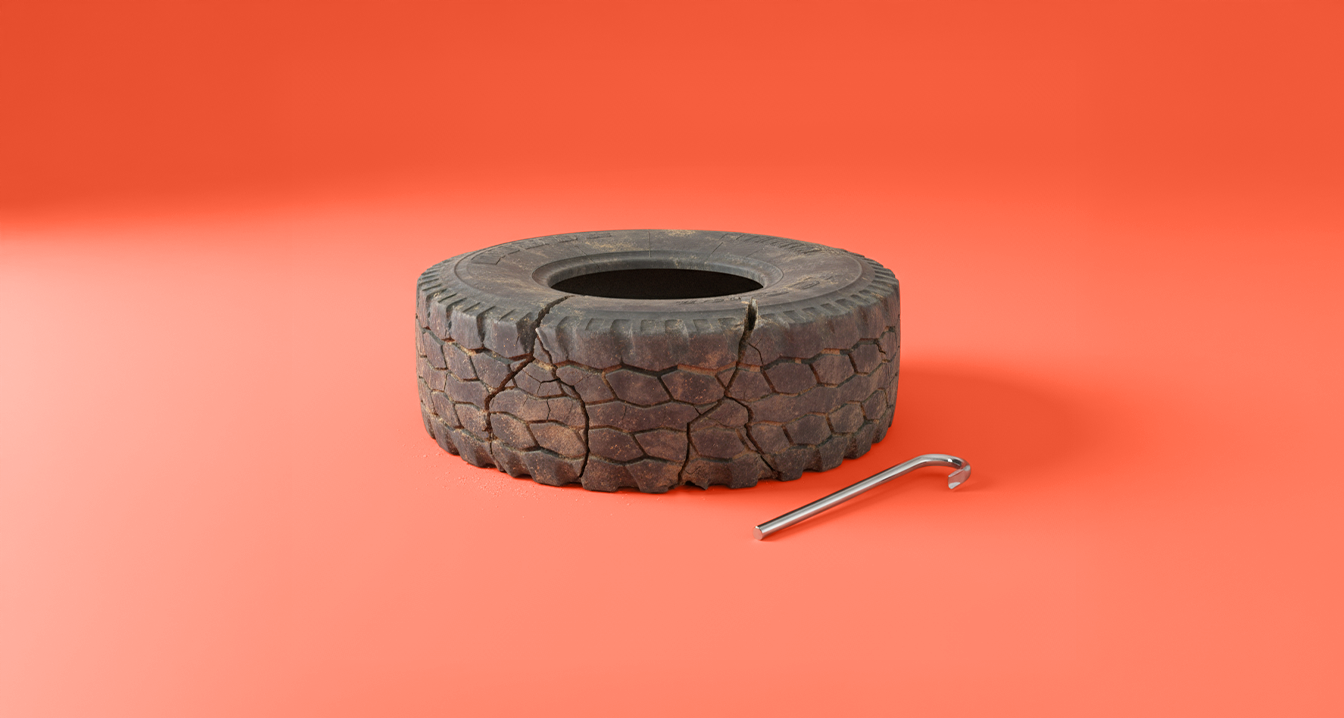What do you know about the specifications of truck tires? This is the primary medium that transfers engine power to the road surface, controls the vehicle's steering and stability, and is the first safety shield on the road!
With the advancement of technology, tires have become more than a simple rubber component. They are a complex engineering production that combines the latest technologies and materials to ensure superior performance and unparalleled safety.
Because tires carry all these heavy responsibilities, understanding the information and symbols printed on their sidewalls is not just a technical matter. It is an imperative for every responsible driver. It is a unified global language designed to provide you with accurate and vital information about the tire, including its exact dimensions, load carrying capacity, speed, and even the date of manufacture and type of construction.
So, let's dive into the world of tire codes to reveal their secrets and learn about the criteria for choosing the right tire for trucks to make our driving safer, efficient and responsible.
Tire symbols and what do the numbers and letters printed on the sidewall of the tire mean

Let's take a model of a common tire code, for example: LT245/75R16 120/116S, and explain how to read tire codes. Each part of this code has a specific meaning, as follows:
The first letter in the code indicates the type of vehicle for which the tire was designed. In the previous example, “LT” means “Light Truck” means any tire designed for light trucks, SUVs and some types of vans, knowing that light truck tires are designed to carry greater weights and higher inflation pressures than passenger car tires.
The first number, “245” represents the width of the tire section in mm. It is noticeable that this truck tire is slightly wider than the passenger car “215 mm”, which usually provides greater carrying capacity and possibly better stability in some conditions.
The second number after the italics, which in the previous example is “75", is the aspect to width ratio. It expresses the height of the tire wall as a percentage of the width of the tire section. Here, it is 75% of 245 mm. It indicates that this tire has a longer sidewall, which is common in light truck tires to better absorb shocks on rough roads and provide a more comfortable ride.
The next letter “R” indicates the type of internal structure of the tire, which is the “radial” or radial structure, which is the most common in modern tires for its durability, strength and effective control.
The last digit in this section “16” represents the rim diameter in inches. This indicates that the tire is designed to be mounted on a 16 inch rim. Note that the larger rim diameter “16 inches versus 15 inches in the passenger car example” is also common in light trucks to provide more space for larger brakes, which are often used in this type of vehicle.
The number “120/116” refers to two load indicators. This means that this tire is designed for dual use. The first load index “120" represents the maximum load that a single tire can withstand when it is mounted singly on the “Single Tire Configuration” axle, while the second load index “116" represents the maximum load that a single tire can withstand when it is mounted double on the “Dual Tire Configuration” axle, as is common in some light and heavy trucks on the rear axle.
The last letter “S” is the “Speed Rating” symbol. This symbol indicates the maximum operating speed that the tire can withstand. This “S” indicates a top speed of 180 km/h.
The difference between radial and diagonal tires
It is considered by all The radial frame A diagonal frame is two main types of tires, which can be fundamentally distinguished based on the internal structure design, as follows:
“Bias” diagonal tires are based on crossed layers of nylon cords that are placed diagonally at a 55 degree angle across the tread and sidewalls. This design gives them high structural stability and remarkable resistance to sidewall damage.
However, the disadvantage of this design is that it results in higher rolling resistance, resulting in greater heat generation, a decrease in driving comfort due to stiffness, and an increase in fuel consumption.
In contrast, “Radial” tires feature an internal structure that uses layers of steel rope attached to the heel with a steel strap surrounding the shell.
This design makes the sidewalls more flexible while maintaining the strength of the tread, providing excellent steering, better road contact, improved ride, lower heat generation at high speeds, greater wear resistance in the tread area and lower fuel consumption.
However, radial tires have a less stable sidewall under heavy loads and increased sidewall wear.
Which is better for trucks: radial tires or diagonal tires?
After knowing the difference between radial and radial tires, it remains to answer the question of which is better for trucks. In this case, you should first understand the nature of the use of trucks and their different requirements.
Trucks vary greatly in their types, sizes and load weights, as well as in operating conditions and types of roads they use. Therefore, tire quality standards depend on the specific application, type of truck and expected operating conditions. Let's separate the reasons behind this and compare the two types in particular for trucks:
Overall, radial tires are the best and most popular choice for most modern trucks, especially those that operate on paved roads. They provide a superior combination of fuel efficiency, driving comfort, performance and tread life.
While diagonal tires may still be an acceptable option in very specific applications, where sidewall resistance or initial cost are the primary considerations, in most truck use cases, radial tires are the best choice technically and economically.
In any case, it is preferable to Consult a tire technician Specialist or consult the truck owner's manual to determine the appropriate truck tire specifications based on the type of truck and expected operating conditions.
Quality standards and specifications to look for when buying new tires
When buying new tires for your truck, it is important to look for quality standards and specifications that ensure the safety and optimal performance of your vehicle. Choosing the right truck tire specifications is not just a personal preference, but a decision that significantly affects your safety, driving comfort, fuel efficiency and the life of the tire itself.
Here are the most important tire quality criteria to look for when buying:
The correct tire size specifications
The dimensions of the new tire “width, aspect ratio, rim diameter” should match the specifications recommended by your truck manufacturer, which are usually found in the truck owner's manual, on a sticker on the driver's door rim, or in the fuel tank cover.
The appropriate load index and speed code
The load index and speed symbol of new tires should be equal to or higher than the minimum recommended by the truck manufacturer, as these indicators indicate the maximum weight and speed that the tire can safely withstand.
The type of tire suitable for driving conditions and the type of truck
choose Type of frame Which suits your driving conditions and the type of your truck. There are different types of tires designed for specific purposes, such as: all-season tires, summer tires, winter tires, and all-terrain tires.
production date
Tires deteriorate over time even if they are not used intensively, so you should look for relatively new tires and avoid buying tires that are more than a few years old. It is not recommended to buy tires that are more than 5-6 years old from the date of production, even if they are not used. You can find out production date From the DOT code on the sidewall of the tire where the last four digits represent the week and year of production.
Quality marks and other specifications
The tire buying guide also advises you to look for “TWI” wear indicators in the tire tread as an indication of the need for replacement when they are reached. Also, pay attention to the “UTQG” wear rating, as the wear rating indicates the expected life of the tread, the grip rating to stopping power on wet surfaces, and the temperature rating to the tire's heat resistance. Do not forget the importance of choosing the right tire for trucks from reputable manufacturers, as these companies invest in quality and reliability to ensure better performance and safety of your tires.
Inspect the frame visually
In addition to the quality standards of tires mentioned earlier, you should carefully inspect them visually before purchasing to make sure that there is no visible damage such as: cracks or bulges in the sidewall, damage or tears in the tread, irregular wear in the tread, and any signs of damage or previous repair.
“Darbak” specialists save you a lot of time and effort in the process of choosing the right tire for trucks through a variety of tires that combine modern technology and endurance, approved by Saudi standards and the Gulf conformity badge, Order it now, and be fully prepared for your journey.
.jpg)






